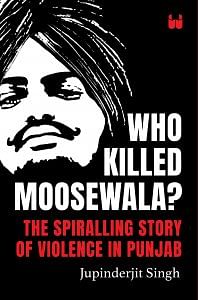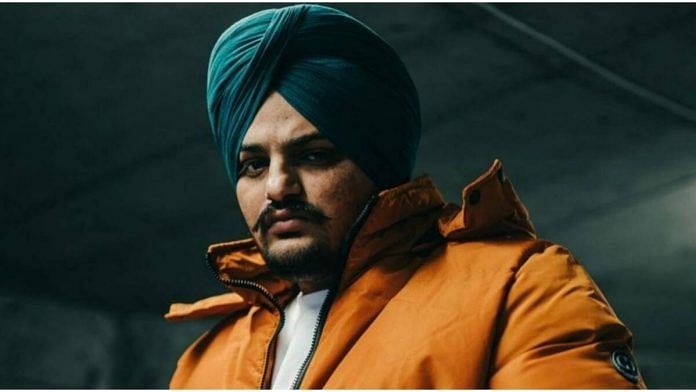Shubhdeep was proud of his education. In media interviews, he would talk about being one of the few in his village who had an engineering degree. ‘I have seen my parents work hard for me. They were worried that, like many youths in the state, I may get involved with drugs or other illegal activities in some way, but I was committed to making a name. So, I tried engineering and got good marks and a seat at GNE Ludhiana [Guru Nanak Dev Engineering College], among the best colleges in the country. Engineering was to make a living, but music was the food for my soul. That is why I tried my hand at music again when I was in Ludhiana.’
Shubhdeep’s passion for singing seems to have really developed when he was studying engineering. He started taking lessons from Harvinder Rattu, a music teacher who had a school near the industrial city of Ludhiana.
‘Sidhu first came to me sometime in 2014. I think he was in the third year of his engineering course,’ recalled Rattu. ‘He was what we call in local parlance a shreef jeha munda, a shy, polite and well-mannered boy. He rarely talked, just a word or two here and there. Later, I would be surprised by the aggression in his songs and stage performances. That was someone else. The one who came to learn music was Shubhdeep Singh from a village in a backward region of Punjab. And it seemed he was not very confident in the urban competitive world. But people change, thinking changes and the company you keep also changes. The person I saw in those music videos was not Shubhdeep. He was Sidhu Moosewala.’
When he first met him, Rattu liked the youngster’s voice but found him raw. ‘He had an innocent freshness which teachers love, as they can shape the singer. Sidhu learnt vocal, harmonium and tumbi in school,’ said Rattu. ‘He was very keen and hardworking, but no one can make you a singer. No one can gift you a voice and control. He had something, but music comes to you on its own. You can’t learn it in a laboratory. He wasn’t promising at first, but then music found him. The real change came when he went to Canada. He was a different person, a star.’
Rattu recalls that Shubhdeep wrote his first song, License, while still in music school. ‘He trained for almost a year. Once he became confident, he wanted to sing his own songs. We found a songwriter and had some sessions with him. However, the writer didn’t deliver the songs despite assurances. That upset Sidhu and he announced that he would write his own songs.’
Arshdeep added, ‘A songwriter promised Sidhu he would write, but he didn’t. The man was not answering his phone calls. So, a day before the scheduled recording of the song, Sidhu went to the man’s house in a village in Ludhiana though it was late in the evening and it was raining. When Sidhu reached his house, the writer sought money for the song. “I don’t have any money to pay. I even rode my bike to your house on borrowed petrol,” Sidhu told him. That was our Sidhu. He was not cowed down by things. Later, when he found his partners would not pay him equally, he started his own music label.’
Now that Shubhdeep had decided to write his own song, he needed a fitting subject. The conversation with his friends and his teacher led to the story of Shaheed Udham Singh of Sunam, a town not too far from Moosewala’s home district of Mansa. Udham Singh had killed General Michael O’Dwyer, a former Lt. Governor of Punjab during British rule, on 13 March 1940, in London, to avenge the Jallianwala Bagh massacre that took place on 13 April 1919. Rattu recalled drawing Shubhdeep’s attention to the fact that Udham Singh had waited for more than twenty years to finally get his revenge. Moosewala’s eyes had lit up listening to the tale and he said, ‘It is amazing that he kept the spirit of revenge alive for so long, but I wonder how he got a licence in England to carry that gun.’ Rattu chuckled and said, ‘Who needs a licence when you know your mission will end in certain death for you?’
Those words seem to have resonated with Shubhdeep and he wrote the song License which was released in June 2016. Punjabi singer Ninja sang it while Gold Boy composed the music. It was released by Speed Records. It said: Jinhe chakna … licence nahiyo lainde.
The brave do not need a warrant
to raid the enemy’s house
Or a licence to use weapons
Their guts are enough
Through his first song, Shubhdeep was making a statement. According to Rattu, Moosewala wanted to proclaim his arrival on the scene through his lyrics. He wanted people to sit up and take notice. ‘Sometimes, people from small cities and unknown villages overdo things just to convey that they are also there, that they also matter and they are something. I think Sidhu wanted to simply tell the world that he was someone too. That he and his family had laboured hard, which most families do in one way or the other. And that he had risen from humble origins,’ Rattu said.
In his later songs too, Moosewala sang about historical characters, local Robin Hoods, gangsters, terrorists and militants. Rattu noticed his attraction towards rebels and heroes, both historical and from folklore. Some of those ‘heroes’ were considered exactly that by the state. Rattu said, ‘With times, kalakars change. They play to the gallery. I felt Shubhdeep’s lyrics came from deep within. He later learnt about the market, and I think that changed him, or maybe it was the different kind of company he began to keep. At the same time, you have to notice that many singers die in penury while saving Punjabi boli and idiom in their art, whether in songs or stories. Why should Moosewala have met the same fate?’ It was true that people loved Moosewala’s brand of Punjabiyat—the masculine bravado, the guns, the fast cars and the gumption to fearlessly take on one’s enemies. It pushed Sidhu to play up that part of his personality.
 This excerpt from Jupinderjit Singh’s ‘Who Killed Moosewala: The Spiralling Story of Violence in Punjab’ has been published with permission from Westland Books.
This excerpt from Jupinderjit Singh’s ‘Who Killed Moosewala: The Spiralling Story of Violence in Punjab’ has been published with permission from Westland Books.



